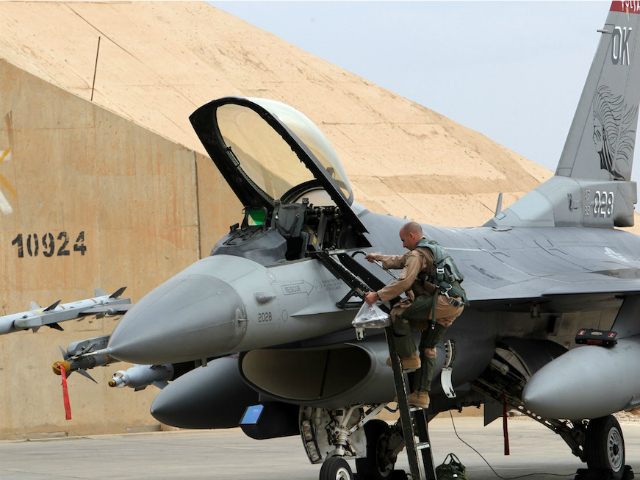WASHINGTON, D.C. — A U.S. pilot safely ejected before the U.S. F-16 warplane he was flying crashed during an evening takeoff near Bagram Air Field, the largest American military base located north of the Afghan capital Kabul, according to the Pentagon.
The fighter jet that crashed in Afghanistan was assigned to the 455th Air Expeditionary Wing, Pentagon press secretary Peter Cook told reporters on Tuesday.
Cook explained, “The pilot safely ejected, was recovered by coalition forces, and is being evaluated by medical personnel. Coalition forces are securing the crash site.”
The pilot is reportedly being evaluated by doctors at the Craig Joint Theater Hospital at Bagram. However, it was not immediately known if the pilot has been released from care.
“The cause of this accident will be investigated and more information will be released as it becomes available, but literally, that’s all I know at this point,” he added.
Cook said “there’s no indication” at the moment that the F-16 was taken down by enemy fire.
Citing the U.S. Department of Defense (DOD), the Special Inspector General for Afghanistan Reconstruction (SIGAR), a watchdog agency appointed by Congress, reported that there were 8,950 U.S. service members serving in Afghanistan as of December 30, 2015, as part of the train, assist, and advice mission.
President Obama, who declared the conclusion of the U.S. combat mission at the end of 2014, is expected to further reduce the U.S. military footprint to 5,500 by the end of 2016.
However, deteriorating security conditions fueled by a resurgent Taliban and a weak U.S.-trained Afghan National Defense and Security Forces (ANDSF) has led American military commander to review the withdrawal plans.
In February, Army Gen. John F. Campbell, the then-top commander of U.S. and NATO forces in Afghanistan, warned that reducing the number of U.S. troops in Afghanistan to 5,500 “puts the whole mission at risk,” the Associated Press (AP) reported.
In its latest quarterly report to lawmakers, SIGAR said that during the reporting period of Oct. 1 thru Dec. 31, 2015, “Afghanistan proved even more dangerous than it was a year ago.”
“The Taliban now controls more territory than at any time since 2001. Vicious and repeated attacks in [Afghan capital] Kabul this quarter shook confidence in the national-unity government,” reported John Sopko, the inspector general. “A year after the Coalition handed responsibility for Afghan security to the Afghan National Defense and Security Forces (ANDSF), American and British forces were compelled on several occasions to support ANDSF troops in combat against the Taliban.”

COMMENTS
Please let us know if you're having issues with commenting.